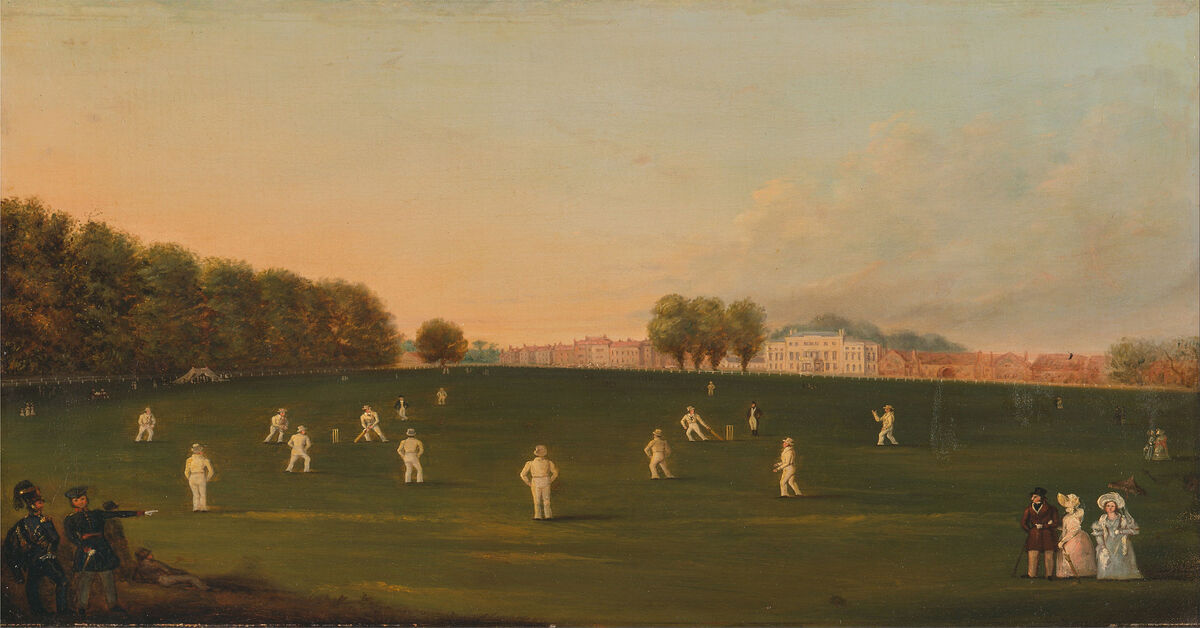History of Cricket: From Origins to Modern Formats
Explore the history of cricket from 16th-century England to today’s global formats like Test, ODI, and T20. Discover key milestones, rivalries, and traditions.
Cricket, often described as a gentleman’s game, has evolved into a worldwide spectacle with a rich and fascinating legacy. From its humble origins on village greens in southeast England to the dazzling lights of the Indian Premier League (IPL), cricket’s journey is one of transformation, passion, and global unity.
But when did cricket start, and how did it grow from a children’s game into a professional, multi-format sport watched by billions? What stories, traditions, and rules shaped its path? Let’s explore the evolution of cricket.
Cricket Timeline: Major Milestones in the Evolution– History of Cricket
- 16th Century: Cricket originates in southeast England, primarily played by children.
- 1611: First documented reference to cricket being played by adults; two men were fined for skipping church to play.
- 17th Century: Grows in popularity across counties like Kent, Sussex, and Surrey.
- 1760s: Formation of the Hambledon Club, considered one of the first major cricket clubs.
- 1774: Introduction of new cricket laws, including the Leg Before Wicket (LBW) rule and a standardized bat width.
- 1787: Marylebone Cricket Club (MCC) is founded; becomes the custodian of the Laws of Cricket.
- 1844: The first international cricket match takes place between Canada and the USA in New York.
- 1877: The first official Test match is played between Australia and England at the Melbourne Cricket Ground.
- 1882: The Ashes series is born after Australia defeats England at The Oval.
- 1971: The first-ever One Day International (ODI) is held between England and Australia.
- 1975: The inaugural Cricket World Cup is hosted in England.
- 2003: Twenty20 (T20) cricket is introduced by the England and Wales Cricket Board (ECB).
- 2008: The IPL launches, revolutionizing cricket’s economics and entertainment.
- Present Day: Cricket thrives across Test, ODI, and T20 formats, captivating audiences across continents.
The Origin of Cricket: How It All Began
The origin of cricket remains somewhat unclear, but most historians agree it began in southeast England in the late 1500s. Initially a children’s game, it quickly gained popularity among adults in the 17th century, particularly in Kent, Sussex, and Surrey.
The word “cricket” may have come from the Old English “cryce” or Middle Dutch “krick,” both referring to a stick or staff. Another theory ties it to “krickstoel,” a stool used in church that resembled the early wicket.
By 1611, the game entered legal records when two men were fined for playing cricket instead of attending Sunday service—a landmark moment in the sport’s early history.
Early Cricket: Gambling, Rules, and Rivalries
As cricket grew in the 18th century, gambling became a big part of the game. Wagers on matches led to formalization. In 1774, a 500-guinea bet triggered the introduction of the LBW rule and new equipment standards, marking the beginning of modern cricket laws.
Clubs and Rules: The Formalization of Cricket

The 18th century marked a turning point for cricket. With the establishment of the Hambledon Club in the 1760s, cricket started becoming a more formalized sport. The club, based in Hampshire, dominated the cricketing landscape and laid down many of the rules still foundational to the game today.
But it was the founding of the Marylebone Cricket Club (MCC) in 1787 that truly standardized the sport. The Laws of Cricket, written by the MCC, were adopted universally and continue to serve as the primary framework for the sport.
Cricket in the Modern Era: Formats and Global Growth
With the introduction of Test cricket, ODIs, and T20s, cricket evolved into a multi-format sport. The IPL, launched in 2008, turned cricket into a global entertainment powerhouse. Today, fans follow cricket across platforms and borders—from Test match traditions to high-octane T20 leagues.
Why Cricket Didn’t Flourish in the USA and Canada
Although Canada and the United States played the first-ever international cricket match in 1844, the sport never took deep root in North America. While cricket blossomed across the British Empire—in countries like India, Australia, and the West Indies—its presence in the USA and Canada faded over time. Here’s why:
- The Rise of Baseball: In the USA, baseball’s emergence in the mid-1800s as a faster, uniquely American sport quickly captured the public’s imagination and overshadowed cricket.
- Lack of Institutional Support: Unlike in other nations, North America lacked strong cricket boards or formal systems to sustain and promote the sport.
- Post-Independence Identity Shift: Especially in the USA, distancing from British customs—including cricket—became part of forging a national identity.
- Climate Challenges: Canada’s and parts of the USA’s colder climates made regular outdoor cricket seasons impractical.
- Cultural Preferences: North American sports culture evolved differently, with more support for homegrown games like American football, basketball, and baseball.
- Media & Commercialization: Baseball and other sports received better media coverage and commercial backing, further pushing cricket into the background.
Despite this, cricket is now witnessing a resurgence in North America, especially with the growth of South Asian communities and new leagues like Major League Cricket (MLC) in the U.S.
Conclusion: A Game of History, Legacy, and Global Appeal
Cricket’s rich history is a testament to its adaptability and charm. From village greens to global arenas, and from betting scandals to world tournaments, cricket continues to capture hearts and unite fans. Whether you’re a fan of the Ashes, the World Cup, or the IPL, cricket’s journey remains a story of timeless appeal.

